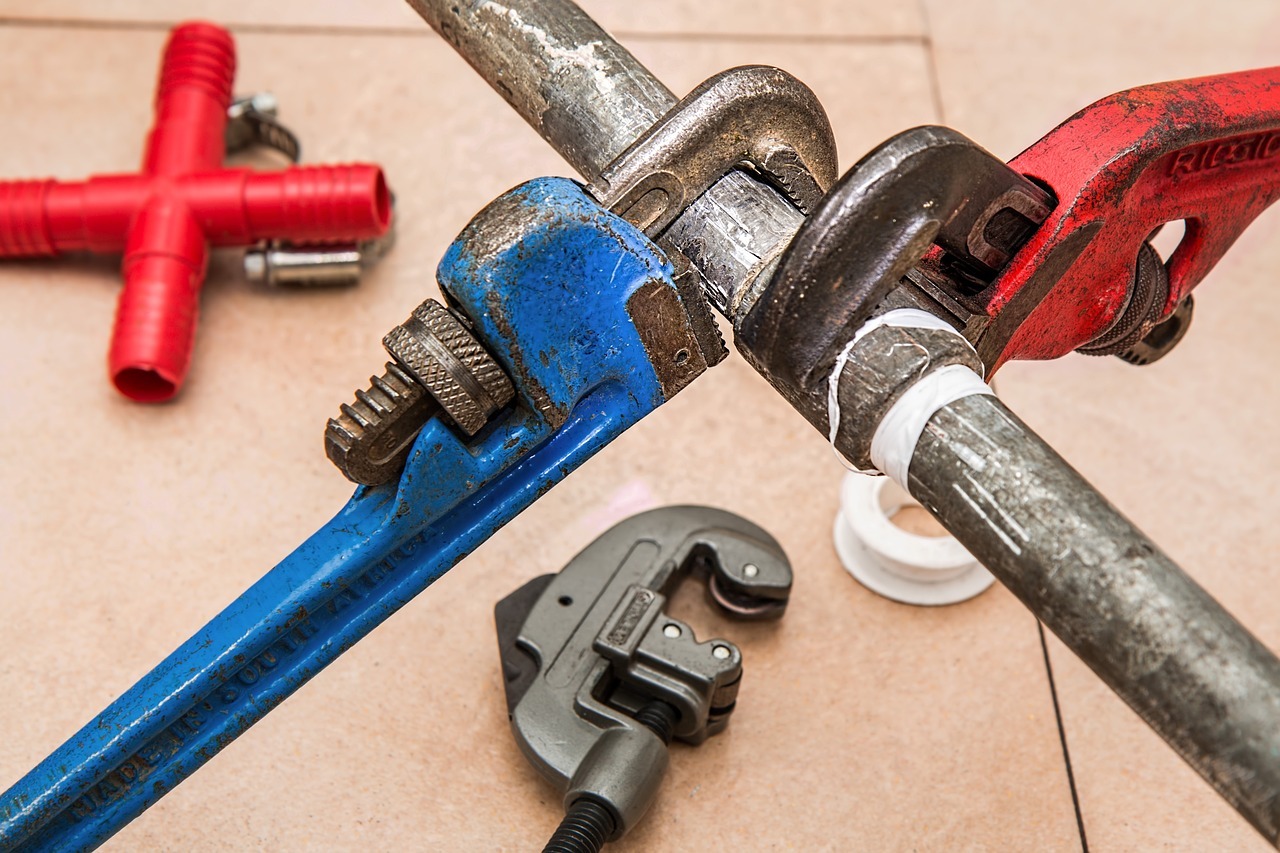Background
An adjustable wrench is a common everyday tool used by millions of professional and hobbyist users around the world.
It functions similarly to any other wrench in that it grabs the head of a fastener (usually a nut or bolt) and allows the user to tighten or loosen it as needed. The obvious difference between adjustable wrench tools is that they are specifically constructed with a flexible, moving jaw. This allows the user to specify specific opening widths in order to work with fasteners of various sizes.
The majority of non-adjustable wrenches can only be used on a single size of bolt or nut.
Alternatively, the adjustable wrench saves you the trouble and extra weight of carrying a full spanner set around with you by allowing you to fine-tune the tool’s jaw opening width to fit around various fastener sizes as you go.
History
Johan Petter (JP) Johansson invented the adjustable wrench in 1891. Two of his inventions, the pipe wrench and the adjustable spanner, made him famous and changed the tool world forever. He had no idea his inventions would be used in trades all over the world until today.
JP noticed that nuts and bolts, like pipe wrenches, required different sizes of tools to tighten and loosen. In the years that followed, his innovation of an adjustable wrench brought him worldwide acclaim. He was not, however, the first to invent the adjustable wrench. Joseph Stubs invented the first one 50 years ago. JP expanded on the original tool design by making it only have one moving jaw, and it has since been sold and appreciated around the world.
What is an adjustable wrench used for?
The possibilities for using an adjustable wrench are practically endless, yet they all serve the same basic function. Their primary function is to allow the tool used to achieve a firm tightening or loosening grip on a variety of fastener sizes without having to switch to a different non-adjustable wrench size every time they encounter a new gauge/diameter of nut, bolt, or pipe section. The smaller lower jaw on the great majority of adjustable wrenches can be pushed backward or forward, increasing or narrowing the gap between it and the fixed higher jaw depending on the size of the fastener it needs to fit securely around. Most adjustable wrenches are single-ended instruments that work with both metric and imperial fastener gauges. However, there is potentially a trade-off for this greatly increased convenience and functionality. Because of their slightly larger heads, which must also fit the jaw-altering mechanism, adjustable wrenches can be slightly more cumbersome than many smaller or more dexterous fastening tools.
When operating in particularly limited or tight spaces, adjustable wrenches may be more difficult to operate than regular wrenches. Lower-quality adjustable wrenches may also suffer from undesirable lower jaw wandering, which means the width the user has set the tool to does not stay locked in under more heavy-duty use and must therefore be readjusted or reset on a regular basis.
Adjustable wrenches are utilized in a wide range of professional and amateur assembly, plumbing, and DIY applications around the world. In the following sections, we’ll look at the many sizes of adjustable spanners that may be purchased from vendors and manufacturers all around the world.
Because an adjustable wrench is a catch-all phrase for a variety of job-specific wrench tools, we’ll also look at some of the many various possibilities marketed under the generic category of adjustable wrenches around the world.
Types and Sizes of Adjustable Wrenches
When most people think of a wrench, they probably think of a normal open-end or box-end wrench. However, these wrenches only come in one size. If you’re very lucky, each end might be a different size, but it’s still only two sizes. To accomplish a work, you may want a variety of wrenches to deal with the various sizes bolts, nuts, and other components.
However, adjustable wrenches provide a more adaptable alternative. These wrenches can be changed to a variety of sizes, allowing one wrench to do the work of several and minimizing the number of tools you need to carry around.
Crescent Wrench
Adjustable crescent wrenches are the wrench world’s all-purpose tool. These are ideal for working with almost any sort of nut and bolt. One side of the jaw is fixed, while the other can be modified by twisting a dial located directly beneath the wrench’s head. This allows you to adjust the jaw opening and closing to obtain the ideal fit.
The crescent wrench is the most common form of adjustable wrench. They’re also among the most flexible, as they can be used for home tasks, automobile repair, and much more. They have angled jaws for a more secure fit, a greater grip on the nut or bolt, and more leverage.
These wrenches are available in a variety of sizes ranging from four inches to four feet! However, most users will not require one larger than 12 inches.
Pie Wrench
A pipe wrench is something you’ll be familiar with if you work with pipes. These are huge adjustable wrenches with slightly slanted jaws that grab any pipe securely. They’re ideal for tightening and releasing pipes. When you wrap the jaws around the pipe, the angle and teeth will grab on, giving you enough of leverage to turn it.
Pipe wrenches range in size from small to massive. 48-inch pipe wrenches, for example, can handle pipes as large as five inches in diameter. Of course, the normal individual will never require such a large wrench. A smaller wrench between eight and 24 inches in length should serve for the majority of people. An eight-inch pipe wrench can work on pipes ranging from ¼-¾ inches in length, and a 24-inch pipe wrench can work on pipes ranging from 1½ to 2½inches in length.
Multi-Angle Pipe Wrench
A multi-angle pipe wrench, as the name implies, is a pipe wrench with an adjustable head angle. This makes it considerably easier to maneuver into small areas, which plumbers frequently encounter. Except for the angled head, this wrench is identical to a regular pipe wrench.
Multi-angle pipe wrenches are available in a variety of diameters, however they are not as large as normal pipe wrenches. Because these are designed for operating in tiny locations, most multi-angle pipe wrenches are eight to twelve inches long.
Self-Adjusting Pipe Wrench
To use a standard adjustable pipe wrench, spin the dial and change the size of the jaws until they’re the perfect fit for the pipe you’re dealing with. This normally entails placing the wrench on the pipe, measuring the size, removing it, adjusting, and repeating the process until it’s perfect. It requires two hands and can be time-consuming. A self-adjusting pipe wrench, on the other hand, is spring-loaded and can be simply and rapidly adjusted to the correct size with one hand, saving you time and frustration.
Self-adjusting pipe wrenches, like multi-angle pipe wrenches, are only available in a few sizes on the smaller end of the spectrum—roughly eight to 15 inches. A 12-inch self-adjusting pipe wrench will typically have a jaw capacity of ⅝-1½ inches.
Swedish Pipe Wrench
A Swedish pipe wrench resembles a pair of vice grip pliers. They quickly adjust by moving the bottom of the handle up until the jaws are snug, then locking them into place. They have a strong grip and an efficient workflow, but their larger size makes them difficult to fit into tiny spaces.
These are frequently employed in automotive operations, such as the removal of tie rod ends. They can also be used on pipes like a standard pipe wrench, albeit only a few sizes are available. Most Swedish pipe wrenches are 10-16 inches long and work with pipes with diameters less than two inches.
Monkey Wrench
Many people have heard of a monkey wrench, but not everyone understands what it is. They resemble pipe wrenches in appearance, but there are some key distinctions. For starters, a monkey wrench is more streamlined, allowing it to fit into tighter spaces. It also has straight jaws, whereas a pipe wrench has inclined jaws.
Monkey wrenches are sometimes known as sliding automotive wrenches. However, the name has a long history. Sailors in the 1800s referred to small tools with specific applications as “monkeys,” which is where the monkey wrench got its name.
Because the jaws of a monkey wrench are made of hardened metal, they will readily damage pipes if used as a pipe wrench. They’re ideal for working with nuts and bolts, and they have lengthy handles that let you to reach into equipment and cars. The majority of monkey wrenches are eight to 18 inches long, while some industrial-sized variants might approach four feet long.
Basin Wrench
Plumbers use basin wrenches to work on faucet bolts, drains, and supply lines. They have long lengths so the user doesn’t have to crawl into a cabinet to get to what they’re working on. Similarly, the head is incredibly compact, allowing it to fit into small locations.
Most basin wrenches are about 12 inches long, but some are up to 17 inches long. Some even have telescoping handles that you may modify to fit the job.
Strap Wrench
Strap wrenches can be used to loosen or tighten almost any circular object. They are often measured by the length of the strap, which can range from six inches to three feet. The strap is often made of rubber or cotton, which will not harm the area you’re grasping. They can be applied to pipelines, oil filters, and a variety of other objects.
Chain Wrench
Chain wrenches and strap wrenches are extremely similar. They have a lengthy chain that you loop around the object you’re tightening or loosening. For a secure grasp, the chain is locked back into the tool. Then, using the handle, you may turn the object that your chain is wrapped around.
Because the chain is comprised of metal, using a chain wrench on a delicate surface will damage it. Chain wrenches, like strap wrenches, are measured by the length of the chain. Generally, the chain is between 12 and 24 inches in length, however there are some greater sizes available.
Lock-Nut Wrench
So far, the majority of the wrenches have several applications. Lock-nut wrenches, on the other hand, are designed expressly for installing and removing the lock nuts on strainer baskets on the underside of sinks. They have spring-loaded jaws that adapt to the proper size for most nuts. A lock-nut wrench is typically 12 inches in length.
Adjustable Spanner Wrench
Spanner wrenches have a very specific application. They’re used to tighten and loosen side slot nuts. These can be found on bearings, lock nuts, and collars. They have a pin that slips into the slot and is tightened around the nut. The size of these wrenches is determined by the spread of the jaws. They will often have a span of one to three inches.
Hex Wrench
In operation, hex wrenches are quite similar to pipe wrenches. However, the wrench’s head is hex-shaped and angled, making it ideal for working on drain bolts on tubs and sinks. Most are between eight and twelve inches long, while longer ones are available. A conventional 10-inch hex wrench has a jaw opening that ranges from one to 2½ inches.
Chain Wrench
Chain wrenches and strap wrenches are extremely similar. They have a lengthy chain that you loop around the object you’re tightening or loosening. For a secure grasp, the chain is locked back into the tool. Then, using the handle, you may turn the object that your chain is wrapped around.
Because the chain is comprised of metal, using a chain wrench on a delicate surface will damage it. Chain wrenches, like strap wrenches, are measured by the length of the chain. The chain is typically between 12 and 24 inches long, though larger sizes are available.
How to Use an Adjustable Wrench
If you’re familiar with regular spanners, utilizing an adjustable wrench is a piece of cake. Adjustable variants function much the same manner as non-adjustable versions, but with the added flexibility of allowing you to manually modify the jaw width between tackling fasteners of varied sizes.
Adjusting the wrench is usually as simple as turning a screw (commonly referred to as a worm screw) positioned on the side/base of the spanner head. The worm screw is sometimes found at the top of the handle, where it joins the lower or heel jaw.
1. Determine the correct size of the nut or bolt to loosen or tighten.
2. Turn the tool’s screw mechanism to open or close the spanner (i.e., change the width gap between its jaws) to the desired position. Depending on which way you turn the screw mechanism, the spanner’s jaws will begin to open or close (it’s nearly always the smaller lower jaw that moves, as opposed to the static upper jaw that remains set in place).
3. Once you’ve opened or closed the lower jaw to the required width for the fastener you’re turning (usually indicated by markings on the tool’s head), you can place it over the nut or bolt in question and double-check that the wrench can get a secure grip on it – if it can’t, you may need to make some additional adjustments.
4. Once you have the tool tight enough to grip the fastener, proceed as you would with any other non-adjustable wrench: crank the fastener right to tighten it, or left to loosen it. Because high-quality tools of this type can deliver a very tight grip on a nut or bolt when used correctly, you may find it necessary to manually loosen the jaws of an adjustable wrench after turning the fastener to the desired degree in order to easily remove it from the head of the fastener around which it’s seated.
Safety Tips
As with any wrenches, adjustable or non-adjustable, there are some generally observed guidelines and norms of best practice you should be aware of in order to ensure you’re utilizing these instruments effectively and safely. These frequently contain suggestions like:
1. Always use a tool that is properly sized.
Choose sizes that minimize play between the jaws and the fastener as much as possible. This reduces the possibility of slipping on the bolt or nut and harming it, the spanner, or yourself.
As an absolute maximum, there should never be more than a centimeter of play – if there is, you’re not using the correct size wrench.
If you’re not sure which size tool to use for a particular fastener, use a thread gauge.
2. Do not attempt to apply more torque than you are capable of handling.
To impart more torque to any form of wrench that isn’t explicitly designed and manufactured for that purpose (most adjustable wrenches aren’t), avoid using hammers, mallets, or other striking tools.
If you put so much weight on the tool, it is not unusual that it may slip violently or that the fastener will abruptly give way.
If you are likely to fall or harm yourself in either of the above circumstances, you are not completing the task safely and should explore an alternative technique.
3. Clean your adjustable wrenches regularly.
In order to keep the tools dry and free of extra grease, filth, or rust, store them securely in an appropriate container or tool box between usage.
If necessary, give them a brief clean before using them; this is easily accomplished with a cleaning rag and some little oil.
Mop up any excess cleaning fluids or oils, as these might cause hands or spanner jaws to slip while the tool is being used.
4. Use extension bars and tubes sparingly.
When using extensions carelessly, it’s easy to exceed the tool’s rated torque specifications, which can quickly lead to catastrophic damage or injury.
5. Always be aware of your surroundings.
While executing the task, consider the location you’re working in and any potential threats it may offer to you or other individuals in the area. This could include:
- Available maneuvering space
- Environmental conditions that are prevalent
- Other people who use the space
- Potential sources of slips, trips, and falls
- Airborne dust, dirt, or pollution sources
- Any other danger factors to your own or others’ health
6. Consider external factors.
Be mindful that variables such as vibration or heat fluctuations can cause fasteners to suddenly loosen or tighten, which can be quickly compounded by any additional forces you apply to them.
Conclusion
Whatever you’re working with, whether it’s pipes, nuts, bolts, tie rods, oil filters, or anything else, there’s bound to be an adjustable wrench to meet your demands. With a single wrench, these tools can replace a whole set of traditional wrenches, simplifying and streamlining your tool bag. Furthermore, they can work on huge items that may be difficult to fit with a conventional wrench.


